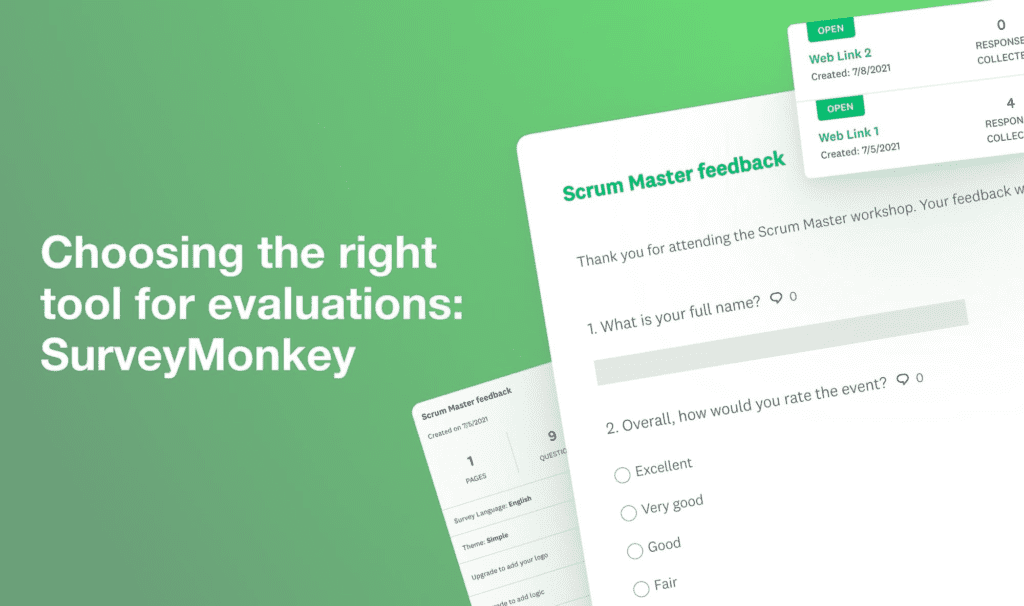Key Takeaways
- Strategic Workforce Development: Uncover the power of Training Needs Analysis (TNA) to align employee skills with organizational goals, fostering a proactive approach to workforce development.
- Step-by-Step Implementation Guide: Navigate the TNA process seamlessly with our comprehensive step-by-step guide, ensuring organizations can identify, prioritize, and address training needs effectively.
- Future-Proof Your Workforce: Embrace emerging trends and technologies in TNA to future-proof your workforce, cultivating a culture of continuous learning and staying ahead in the ever-evolving professional landscape.
In the ever-evolving landscape of today’s professional world, where adaptability and continuous growth are paramount, organizations find themselves at the crossroads of success and stagnation.
The key to staying ahead lies not just in hiring top talent but in nurturing and enhancing the skills of existing personnel.
Enter Training Needs Analysis (TNA), a strategic compass that empowers businesses to identify, address, and bridge the gap between current skills and the skills required for optimal job performance.
Navigating the Uncharted Waters of Training Needs Analysis
The Essence of Training Needs Analysis
At its core, Training Needs Analysis (TNA) is a pivotal process that enables businesses to assess the knowledge, skills, and competencies of their workforce.
This proactive approach ensures that training efforts are not only relevant but also aligned with the dynamic demands of the industry.
In essence, TNA serves as the roadmap for organizations to cultivate a workforce that is not just proficient but excels in their respective roles.
The Unseen Benefits of TNA
Embarking on a TNA journey is not merely a compliance exercise; it’s a strategic investment that pays dividends in employee satisfaction, performance, and overall organizational success.
By delving deep into the current and future needs of the workforce, companies can tailor training programs that resonate with employees, fostering a culture of continuous improvement and adaptability.
Why TNA Matters Now More Than Ever
In a world where technological advancements and industry trends shift at an unprecedented pace, the significance of TNA cannot be overstated.
It acts as a proactive measure, ensuring that employees are equipped with the right skills to navigate the complexities of their roles.
The synergy between TNA and professional development is not just a business strategy; it’s a commitment to employee growth and organizational resilience.
Decoding the Mechanics: How to Conduct Training Needs Analysis
Step 1: Defining Objectives and Goals
The journey of TNA begins with a crystal-clear understanding of organizational objectives and the goals associated with each department.
By aligning training efforts with these overarching goals, companies lay the groundwork for a systematic and purpose-driven analysis.
Step 2: Identifying Key Stakeholders and Subject Matter Experts
Collaboration is the cornerstone of an effective TNA. In this step, organizations identify key stakeholders and subject matter experts whose insights are invaluable in understanding the intricacies of various roles. Engaging these individuals ensures a holistic view of training requirements.
Step 3: Data Collection and Analysis
Armed with a strategic framework and expert input, the next phase involves data collection and analysis. This could take the form of surveys, interviews, performance reviews, or even observation. The goal is to gather comprehensive data that reflects both individual and collective training needs.
Step 4: Prioritizing Training Needs
Not all training needs are created equal. Prioritization is a crucial step that involves assessing the urgency and impact of identified needs. This allows organizations to allocate resources effectively and focus on areas that will yield the most significant returns.
Step 5: Designing Tailored Training Programs
With a clear understanding of training needs, organizations can now embark on the exciting phase of designing customized training programs. These programs not only address current gaps but also factor in future skill requirements, ensuring a proactive approach to employee development.
Step 6: Implementation and Evaluation
Executing the meticulously designed training programs marks the penultimate stage. During this phase, organizations must also establish mechanisms for continuous evaluation and feedback. This iterative process ensures that training efforts remain aligned with evolving needs and industry dynamics.
Step 7: Continuous Improvement
The final step in the TNA process involves a commitment to continuous improvement. By regularly revisiting and refining the analysis, organizations foster a culture of adaptability and growth, ensuring that their workforce remains at the forefront of industry trends.
As we delve into the intricate realm of Training Needs Analysis, it becomes apparent that this process is not just a reactive response to skill gaps but a proactive strategy for future-proofing organizations.
It is a commitment to the professional growth of employees and, by extension, the sustained success of the business in an ever-changing landscape.
Join us on this enlightening journey as we explore the nuances of TNA, unravel its intricacies, and unveil the transformative power it holds for organizations committed to excellence.
Before we venture further into this article, we like to share who we are and what we do.
About 9cv9
9cv9 is a business tech startup based in Singapore and Asia with a strong presence all over the world.
With over eight years of startup and business experience, and being highly involved in connecting with thousands of companies and startups, the 9cv9 team has listed some important learning points in this overview of What is Job-Specific Training and How to Implement It.
If your company needs recruitment and headhunting services to hire top employees, you can use 9cv9 headhunting and recruitment services to hire top talents and candidates. Find out more here, or send over an email to [email protected].
Or just post 1 free job posting here at 9cv9 Hiring Portal in under 10 minutes.
What is Training Needs Analysis and How to Conduct It
- Understanding the Basics of Training Needs Analysis
- The Significance of Conducting TNA
- Key Components of Training Needs Analysis
- Step-by-Step Guide to Conducting TNA
- Tools and Techniques for Effective TNA
- Overcoming Challenges in TNA
- Future Trends in Training Needs Analysis
1. Understanding the Basics of Training Needs Analysis
The Fundamentals of Training Needs Analysis (TNA)
Training Needs Analysis (TNA) forms the cornerstone of effective employee development, providing organizations with insights crucial for fostering growth and success.
Let’s delve into the basics of TNA to comprehend its significance and the fundamental principles that underpin this strategic process.

Definition and Purpose of TNA
- Definition: Training Needs Analysis (TNA) is a systematic process aimed at identifying the gap between employees’ current skills and the skills required for optimal job performance.
- Purpose:
- Pinpoint areas where employees need additional training or development.
- Align training efforts with organizational objectives and goals.
- Enhance overall employee performance and satisfaction.
The Role of TNA in Organizational Success
- Strategic Alignment:
- TNA ensures that training programs are directly aligned with organizational goals, creating a workforce that contributes effectively to the company’s success.
- Performance Improvement:
- By identifying specific skill gaps, TNA facilitates targeted training interventions, leading to improved employee performance.
Clearing Common Misconceptions about TNA
- Not Just for Weaknesses:
- Contrary to the misconception that TNA is solely about addressing weaknesses, it also identifies and enhances existing strengths, allowing employees to excel in their roles.
- Continuous Process:
- TNA is not a one-time event; it’s an ongoing process that adapts to organizational changes, ensuring sustained effectiveness.
The Significance of Conducting TNA
Understanding why TNA is essential provides organizations with the motivation to integrate this process seamlessly into their strategic framework.
Proactive Approach to Employee Development
- Anticipating Future Needs:
- TNA enables organizations to foresee skills needed in the future, preparing employees for evolving job requirements.
- Minimizing Skill Gaps:
- By proactively addressing skill gaps, organizations minimize the risk of performance issues and potential disruptions.
Impact on Employee Satisfaction and Engagement
- Tailored Development Plans:
- TNA leads to personalized training plans, enhancing employee engagement by demonstrating a commitment to individual growth.
- Recognition of Employee Contributions:
- Acknowledging and addressing training needs showcases an organization’s commitment to valuing and investing in its workforce.
Aligning Training Efforts with Organizational Goals
- Strategic Resource Allocation:
- TNA ensures that resources are allocated strategically, focusing on training programs that directly contribute to achieving organizational objectives.
- Enhanced Organizational Performance:
- By aligning training efforts with specific goals, TNA contributes to a more efficient and high-performing workforce.
In the next section, we will explore the key components of Training Needs Analysis, providing a step-by-step guide for organizations to conduct an effective TNA process.
2. The Significance of Conducting TNA
The Strategic Significance of Training Needs Analysis (TNA)
Training Needs Analysis (TNA) is not merely a procedural formality; its strategic significance reverberates throughout an organization, shaping the contours of workforce development and influencing the trajectory of success.
In this section, we unravel the profound importance of conducting TNA and the transformative impact it holds for businesses.
Proactive Approach to Employee Development
- Anticipating Future Skills:
- TNA enables organizations to foresee the skills and competencies that will be crucial in the future, fostering a proactive approach to workforce development.
- Strategic Skill Development:
- By identifying upcoming needs, organizations can strategically develop training programs that equip employees with the skills needed for evolving job roles.

Minimizing Skill Gaps and Potential Disruptions
- Identification of Current Gaps:
- TNA pinpoints existing skill gaps, ensuring that employees are adequately equipped to meet the demands of their current roles.
- Risk Mitigation:
- Proactively addressing skill gaps minimizes the risk of performance issues, potential disruptions, and the need for reactionary measures.
Enhancing Employee Satisfaction and Engagement
- Personalized Development Plans:
- TNA leads to the creation of tailored development plans, demonstrating an organization’s commitment to individual growth and employee satisfaction.
- Investing in Employee Growth:
- Employees appreciate organizations that invest in their professional development, contributing to higher levels of engagement and job satisfaction.
Demonstrating a Commitment to Continuous Improvement
- Cultivating a Learning Culture:
- TNA fosters a culture of continuous improvement, emphasizing the importance of ongoing learning and development for both individual employees and the organization as a whole.
- Adapting to Change:
- In a rapidly changing business landscape, TNA ensures that organizations remain adaptable, responsive, and equipped to navigate shifts in industry trends and technology.
In the upcoming section, we will explore the key components and steps involved in a comprehensive Training Needs Analysis, providing organizations with a roadmap for successful implementation and impactful outcomes.
3. Key Components of Training Needs Analysis
Unveiling the Key Components of Training Needs Analysis (TNA)
Comprehensive Training Needs Analysis (TNA) is a structured process that hinges on identifying, understanding, and strategically addressing the skills gaps within an organization.
In this section, we dissect the essential components of TNA, shedding light on the critical elements that organizations need to consider for a thorough and effective analysis.
Defining Organizational Objectives and Goals
- Strategic Alignment:
- Ensure that TNA aligns with overarching organizational objectives, ensuring that training efforts directly contribute to the success of the business.
- Example:
- If a company aims to expand its market share by diversifying product offerings, TNA might focus on skills related to market research, product development, and marketing strategies.
Identifying Key Stakeholders and Subject Matter Experts
- Inclusive Collaboration:
- Engage with key stakeholders and subject matter experts (SMEs) across various departments to gain diverse perspectives on training needs.
- Example:
- In a manufacturing setting, involving production managers, quality control experts, and machine operators as SMEs ensures a holistic understanding of training requirements.
Methods of Data Collection and Analysis
- Employee Surveys:
- Conduct surveys to gather insights directly from employees regarding their perceived training needs, preferences, and challenges.
- Performance Reviews:
- Evaluate individual and team performance reviews to identify areas where skills improvement can lead to enhanced job performance.
- Example:
- An IT company might use employee surveys to identify a demand for cybersecurity training, while performance reviews highlight specific coding skills requiring enhancement.
Prioritizing Training Needs
- Urgency and Impact:
- Prioritize training needs based on the urgency of addressing specific gaps and the potential impact on organizational performance.
- Example:
- If a sales team is struggling to meet targets due to a lack of advanced negotiation skills, prioritizing negotiation training would have an immediate positive impact.
Designing Tailored Training Programs
- Customization to Roles:
- Tailor training programs to the specific requirements of different job roles within the organization.
- Adaptive Learning:
- Integrate adaptive learning approaches, ensuring that training programs evolve alongside changing job responsibilities and industry trends.
- Example:
- In a customer service-oriented business, tailoring training to address communication skills for front-line staff and problem-solving skills for escalation teams would be essential.
Implementation and Evaluation
- Strategic Rollout:
- Develop a well-defined plan for the implementation of training programs, considering factors such as timing, resource allocation, and employee schedules.
- Continuous Evaluation:
- Establish mechanisms for continuous evaluation and feedback, allowing for real-time adjustments to the training approach.
- Example:
- A software development company might implement a new coding language training program with a phased rollout, accompanied by regular assessments and feedback loops.
Continuous Improvement
- Iterative Process:
- Recognize that TNA is an iterative process, requiring periodic reassessment to stay aligned with evolving organizational needs.
- Flexibility:
- Be open to adapting training programs based on changing job roles, technological advancements, and industry shifts.
- Example:
- An organization embracing continuous improvement might revise its leadership training program based on emerging leadership trends and employee feedback.
In the subsequent section, we will explore the step-by-step guide to conducting a Training Needs Analysis, providing organizations with actionable insights to navigate this strategic process successfully.
4. Step-by-Step Guide to Conducting TNA
A Comprehensive Step-by-Step Guide to Conducting Training Needs Analysis (TNA)
Embarking on a Training Needs Analysis (TNA) journey requires a systematic and strategic approach.
In this section, we break down the process into actionable steps, providing organizations with a roadmap for conducting an effective TNA that aligns with their overarching goals and objectives.
Step 1: Defining Objectives and Goals
- Strategic Alignment:
- Begin by aligning TNA goals with the broader objectives of the organization to ensure that training efforts contribute directly to business success.
- Example:
- If an organization aims to improve customer satisfaction, TNA objectives might focus on enhancing customer service skills among frontline staff.
Step 2: Identifying Key Stakeholders and Subject Matter Experts
- Inclusive Engagement:
- Engage with key stakeholders and subject matter experts (SMEs) representing various departments to gain diverse perspectives on training needs.
- Example:
- In the healthcare sector, involving nurses, doctors, and administrative staff as SMEs ensures a comprehensive understanding of both clinical and administrative training requirements.
Step 3: Data Collection Techniques
- Employee Surveys:
- Design and conduct surveys to gather insights directly from employees regarding their perceived training needs, preferences, and challenges.
- Performance Reviews:
- Analyze individual and team performance reviews to identify areas where skills improvement can lead to enhanced job performance.
- Example:
- An e-commerce company may use surveys to identify the need for advanced digital marketing skills, while performance reviews reveal gaps in data analysis skills.
Step 4: Prioritizing Training Needs
- Impact Assessment:
- Prioritize training needs based on the potential impact on organizational performance and the urgency of addressing specific gaps.
- Example:
- In a manufacturing setting, prioritizing safety training for production staff might take precedence over other skills to mitigate immediate risks.
Step 5: Designing Tailored Training Programs
- Customization to Roles:
- Tailor training programs to the specific requirements of different job roles within the organization.
- Adaptive Learning:
- Integrate adaptive learning approaches to ensure training programs evolve alongside changing job responsibilities and industry trends.
- Example:
- In the finance sector, customization might involve distinct training tracks for accountants focusing on compliance and financial analysts focusing on data analysis skills.
Step 6: Implementation and Evaluation
- Strategic Rollout:
- Develop a well-defined plan for the implementation of training programs, considering factors such as timing, resource allocation, and employee schedules.
- Continuous Evaluation:
- Establish mechanisms for continuous evaluation and feedback, allowing for real-time adjustments to the training approach.
- Example:
- A software development company implementing a new programming language training might roll out modules gradually, accompanied by regular coding assessments and peer feedback.
Step 7: Continuous Improvement
- Iterative Process:
- Recognize that TNA is an iterative process, requiring periodic reassessment to stay aligned with evolving organizational needs.
- Flexibility:
- Be open to adapting training programs based on changing job roles, technological advancements, and industry shifts.
- Example:
- An organization embracing continuous improvement might revise its leadership training program based on emerging leadership trends and employee feedback.
Step 8: Monitoring and Measuring Impact
- Key Performance Indicators (KPIs):
- Define KPIs to measure the impact of training programs on individual and organizational performance.
- Metrics Analysis:
- Regularly analyze metrics related to employee performance, job satisfaction, and skill proficiency to gauge the effectiveness of the TNA process.
- Example:
- A customer service-focused organization might measure the impact of communication skills training through KPIs such as customer satisfaction scores and resolution times.
Step 9: Reporting and Communication
- Transparent Communication:
- Share the results of the TNA and the outcomes of training programs with employees, creating transparency and building confidence in the organization’s commitment to development.
- Feedback Loop:
- Establish a feedback loop with employees to gather insights on the relevance and effectiveness of the conducted training.
- Example:
- A retail company might communicate the success of a sales training program by sharing improved sales figures and customer feedback with the sales team.
In the following section, we will explore tools and techniques for effective TNA, empowering organizations to leverage technology and best practices for a seamless analysis process.
5. Tools and Techniques for Effective TNA
Unlocking Effectiveness: Tools and Techniques for Comprehensive Training Needs Analysis (TNA)
In the fast-paced landscape of employee development, leveraging cutting-edge tools and proven techniques is essential for conducting a thorough Training Needs Analysis (TNA).
This section explores the arsenal of tools and techniques available to organizations, empowering them to streamline the TNA process and derive actionable insights for targeted training interventions.
Utilizing Technology for Data Collection and Analysis
- Employee Surveys through Online Platforms:
- Employ online survey tools like SurveyMonkey or Google Forms to efficiently gather insights from employees regarding their training needs and preferences.
- Data Analytics Platforms:
- Utilize data analytics tools such as Tableau or Microsoft Power BI to analyze performance data, identifying patterns and trends indicative of specific training requirements.
- Example:
- A tech company might use Google Forms to survey employees on their software proficiency, while Power BI can analyze performance metrics to pinpoint areas needing improvement.

Best Practices in Conducting Employee Surveys
- Anonymous Feedback:
- Ensure survey anonymity to encourage honest and unbiased feedback from employees, fostering a transparent understanding of their training needs.
- Closed and Open-Ended Questions:
- Craft surveys with a mix of closed-ended questions for quantitative data and open-ended questions to capture qualitative insights and suggestions.
- Example:
- An organization could use anonymous surveys to gather insights on soft skills, including communication and teamwork, by combining closed-ended ratings with open-ended comments.
Incorporating Performance Metrics and Key Performance Indicators (KPIs)
- Performance Scorecards:
- Develop performance scorecards that align with organizational goals, allowing for a clear visualization of individual and team achievements.
- KPI Tracking Software:
- Leverage KPI tracking tools like Klipfolio or Geckoboard to monitor key performance indicators related to employee performance and identify areas for improvement.
- Example:
- In a sales-driven environment, KPIs may include revenue generated, conversion rates, and customer satisfaction scores, providing a holistic view of the sales team’s effectiveness.
Adaptive Learning Platforms
- Personalized Learning Systems:
- Implement adaptive learning platforms like Coursera for Business or LinkedIn Learning, tailoring training content based on individual employee needs and learning styles.
- Learning Management Systems (LMS):
- Utilize LMS tools such as Moodle or TalentLMS to organize, deliver, and track training programs efficiently.
- Example:
- An organization embracing adaptive learning might use Coursera for Business to offer diverse modules, allowing employees to choose the most relevant courses based on their identified needs.
AI-Powered Skills Assessment
- Skill Evaluation Algorithms:
- Employ AI-driven platforms like Vervoe or Pymetrics to assess employees’ current skills and competencies, providing an objective baseline for training needs identification.
- Dynamic Proficiency Mapping:
- Leverage AI to dynamically map employee proficiency levels and predict future skill requirements based on industry trends and technological advancements.
- Example:
- In the IT sector, an AI-driven assessment tool could analyze coding proficiency, adaptively identifying areas for improvement and predicting emerging programming languages.
Overcoming Challenges with Technology
Addressing Resistance to Technology Adoption
- Training and Onboarding Programs:
- Conduct training sessions and onboarding programs to familiarize employees with the selected tools, addressing any apprehensions and building confidence in their usage.
- User-Friendly Interfaces:
- Choose tools with intuitive interfaces to minimize the learning curve, making it easier for employees to embrace technology in the TNA process.
- Example:
- An organization introducing a new survey platform could conduct workshops and provide tutorials to ensure employees are comfortable using the tool for feedback.
In the upcoming section, we will explore real-world case studies and success stories, showcasing organizations that have effectively implemented these tools and techniques to conduct impactful Training Needs Analysis.
6. Overcoming Challenges in TNA
Navigating the Terrain: Overcoming Challenges in Training Needs Analysis (TNA)
As organizations embark on the journey of Training Needs Analysis (TNA), challenges are inevitable.
However, equipped with the right strategies, these challenges can be addressed proactively, ensuring a seamless and effective TNA process.
In this section, we explore common challenges and provide actionable insights on overcoming them.
Addressing Resistance to Change
- Communication and Transparency:
- Communicate the benefits and objectives of TNA clearly to employees, emphasizing how it aligns with personal and professional growth.
- Employee Involvement:
- Involve employees in the TNA process, seeking their input and feedback, which fosters a sense of ownership and diminishes resistance.
- Example:
- A manufacturing company faced resistance to TNA due to concerns about job security. By transparently communicating that TNA aimed at upskilling for future roles, employees became more receptive.
Handling Limited Resources and Budget Constraints
- Prioritization of Needs:
- Prioritize training needs based on urgency and impact, ensuring that limited resources are allocated to areas with the highest potential return on investment.
- Leveraging Cost-Effective Tools:
- Explore cost-effective or free tools for data collection, surveys, and analysis to maximize the impact of available resources.
- Example:
- A startup with budget constraints prioritized essential skills training for its sales team and utilized free survey tools to collect feedback, optimizing its limited resources.
Adapting Training Programs to Evolving Job Roles
- Continuous Evaluation:
- Establish a framework for continuous evaluation of job roles, ensuring that training programs evolve in tandem with changes in responsibilities.
- Flexibility in Content Delivery:
- Utilize flexible training formats, such as e-learning modules, that can be easily updated to accommodate evolving job requirements.
- Example:
- In the tech industry, where job roles evolve rapidly, an organization implemented a modular training program, allowing quick updates to address emerging technologies.
Future-Proofing TNA Strategies
Embracing Technology for Remote Work Environments
- Virtual Collaboration Tools:
- Utilize virtual collaboration tools to engage remote teams in the TNA process, ensuring inclusivity and accurate representation of training needs.
- Example:
- A company with a distributed workforce used video conferencing and collaborative platforms to conduct virtual focus groups for TNA, ensuring remote employees’ perspectives were considered.

Personalized and Adaptive Learning Approaches
- AI-Driven Personalization:
- Explore AI-driven learning platforms that personalize training content based on individual employee profiles and learning styles.
- Continuous Feedback Loops:
- Implement continuous feedback mechanisms within training programs, allowing employees to provide real-time insights on the relevance and effectiveness of the content.
- Example:
- A financial institution adopted an AI-powered learning platform that dynamically adjusted the complexity of financial modeling training based on each employee’s progress and feedback.
In the upcoming section, we will delve into future trends in Training Needs Analysis, exploring how organizations can stay ahead of the curve in employee development strategies.
7. Future Trends in Training Needs Analysis
Paving the Way: Future Trends in Training Needs Analysis (TNA)
As the workplace continues to evolve in response to technological advancements and changing dynamics, the future of Training Needs Analysis (TNA) holds exciting possibilities.
This section explores emerging trends that are shaping the landscape of employee development, ensuring that organizations stay ahead of the curve in identifying and addressing training needs.
Integration of Artificial Intelligence in TNA
- AI-Driven Skills Assessment:
- Utilize AI algorithms to conduct more sophisticated and dynamic skills assessments, providing a detailed and accurate understanding of employees’ current competencies.
- Predictive Analysis:
- Leverage AI for predictive analysis, forecasting future skill requirements based on industry trends, organizational goals, and emerging technologies.
- Example:
- A tech company employing AI-driven skills assessments predicted the demand for machine learning skills and proactively initiated training programs to prepare its workforce for upcoming projects.
Emphasis on Continuous Learning and Development
- Microlearning Modules:
- Embrace microlearning, offering short and focused training modules that align with the preferences of modern learners and facilitate continuous learning.
- Mobile Learning Platforms:
- Develop mobile-friendly learning platforms that enable employees to access training content anytime, anywhere, fostering a culture of continuous development.
- Example:
- A multinational corporation implemented microlearning modules accessible via mobile devices, enabling employees to engage in brief training sessions during commute or breaks.
Personalized and Adaptive Learning Approaches
- Personalized Learning Paths:
- Implement platforms that create personalized learning paths for employees, considering their individual skills, preferences, and career aspirations.
- Adaptive Content Delivery:
- Integrate adaptive content delivery systems that adjust the difficulty and format of training materials based on individual progress and feedback.
- Example:
- A marketing agency introduced personalized learning paths, allowing employees to choose between analytics-focused or creative-focused training tracks, tailoring the learning experience to their roles.
The Evolution of TNA in Remote and Hybrid Work Environments
Virtual Reality (VR) and Augmented Reality (AR) Integration
- Immersive Training Simulations:
- Incorporate VR and AR technologies to create immersive training simulations, providing realistic scenarios for employees to enhance their skills.
- Remote Collaboration Platforms:
- Explore VR and AR platforms that facilitate remote collaboration, ensuring that employees in different locations can participate in TNA activities seamlessly.
- Example:
- A global consulting firm used VR simulations to train its remote teams on client engagement scenarios, allowing employees to practice communication and problem-solving skills virtually.
Gamification of Training Programs
- Interactive Learning Games:
- Introduce gamified elements into training programs, turning learning into an engaging and competitive experience.
- Reward Systems:
- Implement reward systems and recognition for employees who actively participate and excel in training games, enhancing motivation and engagement.
- Example:
- A sales-oriented organization gamified its product knowledge training, turning it into a competition where top performers received recognition and incentives.
Integration of TNA with Performance Management Systems
- Real-Time Performance Data:
- Integrate TNA with performance management systems to access real-time data on employee performance, allowing for immediate adjustments to training strategies.
- Goal Alignment:
- Ensure that TNA outcomes directly contribute to individual and organizational goals set in performance management systems, creating a seamless alignment.
- Example:
- A manufacturing company integrated TNA with its performance management system, allowing supervisors to track employees’ skill development and align it with production targets.
Tapping into Employee Feedback and Collaboration
Social Learning Platforms
- Knowledge Sharing:
- Implement social learning platforms where employees can share insights, best practices, and resources, creating a collaborative learning environment.
- Peer-to-Peer Mentoring:
- Encourage peer-to-peer mentoring and knowledge exchange on these platforms, leveraging the expertise within the organization.
- Example:
- A technology company established a social learning platform where developers could share coding tips and solutions, fostering a collaborative culture of continuous learning.
In the final section, we will recap key insights and provide a compelling call to action, urging organizations to embrace these future trends in TNA for sustained success in employee development.
Conclusion
In the dynamic landscape of today’s workplaces, where change is constant and adaptability is paramount, the significance of Training Needs Analysis (TNA) stands as a beacon guiding organizations toward a future-ready workforce. As we conclude this exploration into the realm of TNA, the insights gained pave the way for organizations to embark on a strategic course for employee development and organizational excellence.
Recapitulating Key Insights
- Foundational Understanding:
- TNA is not merely a procedural formality; it is a strategic process aimed at identifying and addressing the gap between current employee skills and those required for optimal job performance.
- Strategic Alignment:
- Aligning TNA with overarching organizational goals ensures that training efforts are purposeful and directly contribute to the success of the business.
- Real-world Impact:
- Numerous case studies and success stories demonstrate how organizations, through effective TNA, have achieved tangible improvements in employee performance, job satisfaction, and overall organizational success.
Navigating the TNA Journey: A Step-by-Step Guide
- Defining Objectives and Goals:
- Initiating the TNA process with a clear alignment of objectives to organizational goals lays the groundwork for a focused and impactful analysis.
- Employee Engagement:
- Involving key stakeholders, subject matter experts, and employees themselves in the TNA process fosters inclusivity and ensures a comprehensive understanding of training needs.
- Continuous Improvement:
- Recognizing TNA as an iterative process emphasizes the need for continuous improvement, allowing organizations to adapt swiftly to changing dynamics.
Leveraging Tools and Techniques
- Technological Integration:
- The integration of technology, from AI-driven skills assessments to adaptive learning platforms, enhances the efficiency and accuracy of the TNA process.
- Employee Surveys and Feedback:
- Harnessing the power of employee surveys and feedback loops ensures that TNA remains a collaborative effort, with employees actively contributing to the identification of their own development needs.
Overcoming Challenges for Seamless Implementation
- Addressing Resistance:
- Transparent communication and employee involvement are pivotal in overcoming resistance, transforming TNA into a welcomed tool for personal and professional growth.
- Resource Constraints:
- Prioritizing needs and exploring cost-effective tools allow organizations to navigate resource limitations without compromising the effectiveness of the TNA process.
Future-Proofing TNA Strategies: Embracing Trends
- AI Integration:
- The integration of Artificial Intelligence promises more sophisticated skills assessments and predictive analysis, ensuring organizations are prepared for future skill demands.
- Continuous Learning Culture:
- Microlearning, personalized learning paths, and adaptive content delivery represent the future landscape of continuous learning, fostering a culture of professional development.
- Remote and Hybrid Work Environments:
- Virtual reality, augmented reality, and gamification are poised to play a pivotal role in TNA within remote and hybrid work environments, ensuring engaging and effective training experiences.
- Social Learning and Collaboration:
- Social learning platforms and collaboration tools tap into the collective knowledge of the workforce, creating a culture of shared learning and mutual growth.
A Call to Action: Navigating the TNA Journey
In the wake of this comprehensive exploration into the nuances of Training Needs Analysis, the call to action resounds for organizations to embark on this strategic journey with purpose and determination.
- Embrace Change:
- Acknowledge that TNA is not a one-time endeavor but a continuous process that adapts to organizational changes and industry trends.
- Invest in Technology:
- Leverage the power of technology to streamline the TNA process, from sophisticated AI assessments to user-friendly survey platforms.
- Cultivate a Learning Culture:
- Foster a culture of continuous learning, where employees feel empowered to identify their own development needs and actively participate in the learning journey.
- Stay Ahead of Trends:
- Embrace emerging trends in TNA, from immersive technologies to gamification, ensuring that your organization remains at the forefront of innovative employee development.
- Prioritize Employee Development:
- Recognize that investing in TNA is an investment in the growth and success of your workforce, ultimately contributing to the overall success of the organization.
As the workforce landscape continues to evolve, organizations equipped with the tools, strategies, and foresight gained from effective Training Needs Analysis are well-positioned to navigate change, foster a culture of continuous learning, and propel themselves toward sustained excellence.
In the realm of employee development, TNA is not merely a process; it is the compass that guides organizations toward a future where adaptability and growth are the hallmarks of success.
If your company needs HR, hiring, or corporate services, you can use 9cv9 hiring and recruitment services. Book a consultation slot here, or send over an email to [email protected].
If you find this article useful, why not share it with your hiring manager and C-level suite friends and also leave a nice comment below?
We, at the 9cv9 Research Team, strive to bring the latest and most meaningful data, guides, and statistics to your doorstep.
To get access to top-quality guides, click over to 9cv9 Blog.
People Also Ask
What are the 5 steps of training needs analysis?
The five steps of Training Needs Analysis (TNA) are:
- Define Objectives: Align TNA goals with organizational objectives.
- Identify Stakeholders: Engage key stakeholders and subject matter experts.
- Data Collection: Use surveys and performance reviews for insights.
- Prioritize Needs: Assess urgency and impact to prioritize training needs.
- Implement and Evaluate: Roll out tailored training programs and continuously evaluate for effectiveness.
What is the training needs analysis?
Training Needs Analysis (TNA) is a systematic process to identify gaps between employees’ current skills and the skills required for optimal job performance. It involves defining objectives, engaging stakeholders, collecting data, prioritizing needs, and implementing targeted training programs for organizational success.
What are the 4 stages of training needs analysis?
The four stages of Training Needs Analysis (TNA) are:
- Organizational Analysis: Assess overall goals and strategies.
- Task Analysis: Examine specific job tasks and requirements.
- Person Analysis: Evaluate individual employee skills and performance.
- Feedback and Evaluation: Gather input and assess the effectiveness of training programs.































![Writing A Good CV [6 Tips To Improve Your CV] 6 Tips To Improve Your CV](https://blog.9cv9.com/wp-content/uploads/2020/06/2020-06-02-2-100x70.png)


